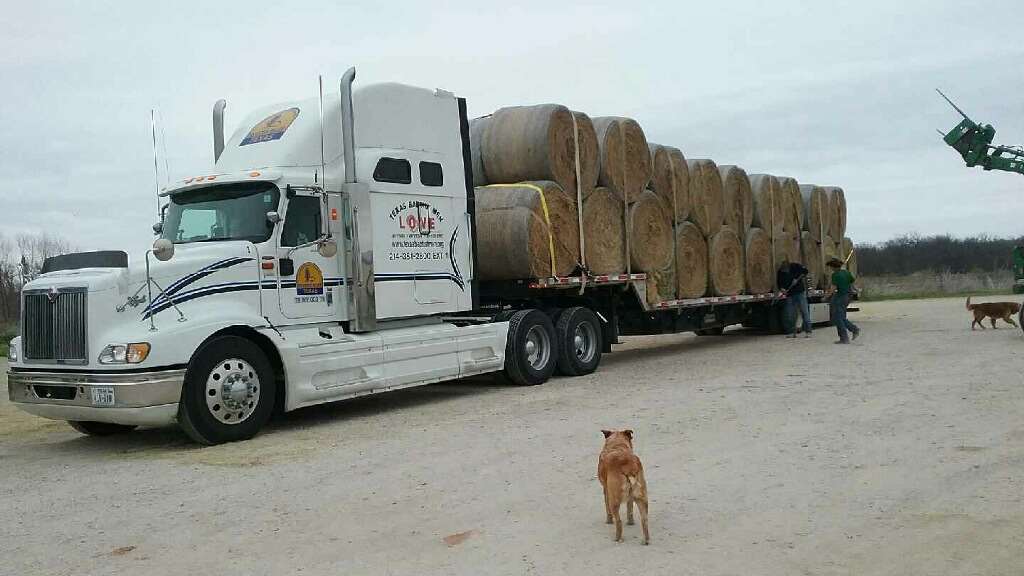
Fire ants can easily attack and kill small livestock such as chickens and ground-nesting wildlife, making efforts to keep them in check of vital importance.
Claude Bess, Oklahoma Cooperative Extension Service director for the state’s Southeast District, said this is putting a bit of a crimp in the plans of some southern Oklahoma farmers and ranchers who want to help out their fellow producers in Woodward, Harper and Beaver counties – and parts of the Oklahoma panhandle and Kansas – who were affected by the March 7 wildfires.
“The massive wildfires have caused a shortage of forage to sustain surviving livestock,” Bess said. “They want to be good neighbors. They have hay to send to affected areas but their operations are located in a current quarantine zone.”
Oklahoma counties in the quarantine area include Leflore, McCurtain, Pushmataha, Choctaw, Bryan, Atoka, Coal, Pontotoc, Johnston, Marshall, Murray, Garvin, Carter, Love, Stephens, Jefferson, Comanche, Cotton, Tillman and Jackson counties.
“In an effort to assist farmers and ranchers in determining if their hay is free of the Red Imported Fire Ant – sometimes referenced as RIFA in documents – and can be legally shipped, our county Extension agricultural educators have been trained to help detect the presence of the ants,” Bess said.
The baled hay inspection takes about an hour and, if found to be ant free, the educator will issue a certificate allowing the hay to be moved into non-quarantine areas.
“If fire ants are found, our Extension educators can advise farmers and ranchers on the best option for treating the hay to ensure it meets requirements for shipping,” Bess said.
Hay donors need to be aware that certain conditions set forth by the Oklahoma Department of Agriculture, Food and Forestry and the U.S. Department of Agriculture’s Animal and Plant Health Inspection Service must be met in order for hay to leave a quarantine area without restriction. These include:
? For stacked hay, all bales except the bottom layer that is in direct contact with the ground;
? Hay that is cut, baled, loaded and shipped without storage;
? Baled hay that is stored on an impervious surface such as highly compressed soil, asphalt or concrete; and
? Baled hay that is stored elevated above the soil on pallets or tires or stored on landscaping cloth placed over the soil.
“Hay or straw from inside the quarantine area that is stored in direct contact with the ground can be moved outside the quarantine area provided it has been inspected, found to be free of the fire ants and travels with a certificate or permit issued by ODAFF or the local USDA office,” said Brad Kard, an entomologist with Oklahoma State University’s Division of Agricultural Sciences and Natural Resources.
Producers need to be aware infested hay bales cannot be sprayed with an insecticide if the hay is going to be consumed in a few days.
“Only the soil around set-aside infested bales can be treated with a bait to clean out ants from the bales,” Kard said. “Then the resulting RIFA-free and re-inspected bales can be shipped.”
Fire ants have a painful sting, and can extensively infest pastures and rangeland with numerous mounds that can damage farm equipment as they try to pass over a mound, which may not necessarily be visible under pasture overgrowth. They also readily infest electrical meter boxes and equipment, and can cause damage to highways, roadways and even airport runways.
“It’s important that we – everybody – do what we can to prevent fire ants from getting established outside the current quarantine zone, in no small part because their reproductive flexibility makes them incredibly successful at surviving, prospering and spreading as a species,” Kard said.
Once established, it is nearly impossible to eradicate an infestation. One fire ant mound can produce up to 3,000 queens a year, and one infested acre of land can produce more than 90,000 queens a year. Swarming occurs several times per year, thereby extending the fire ants’ range into even more acres.
Click here to see more...